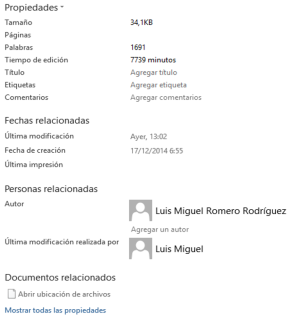Author: Luis-Miguel Romero – Translation: Erika-Lucia Gonzalez-Carrion
We have already talked in this blog about the process of reviewing the manuscripts, in which scientific peer reviewers should evaluate the content of the submitted manuscripts, taking into account the quality of the research and whole fulfillment with the publication regulations.
As a general rule in high-level social science journals, reviewers are usually «double-blind», that is, that neither the author should recognize those who review their contributions, nor should the reviewers know who is the author. This system, besides being a guarantee of a greater objectivity of the revision process, also affects the transparency of the scientific activity ergo of the publication.
Being the transparency, impartiality and objectivity the north to which every scientific publication should aspire, authors are required to anonymize their contributions. In this way, the rules must require at least two types of anonymisation: the textual data and the metadata of the document.
Anonymisation of textual data
In this section, and to initially guarantee an anonymous document, authors should remove from the document or documents that will be submitted for review any indication of authorship, among which are:
- Authors’ information (names, emails, institutional affiliations, researcher number -ORCID-, etc.).
- Data about projects, contracts, support and funding of research that allow direct or indirect authorship.
- Information related with previous studies and that are the starting point of the new research (provided that they are the same authors).
Some journals, such as the case of Comunicar, require authors in their regulations to submit the identification data of the authors in separate documents (presentation and cover-cover letter), while recommending to antonym with XXXXX project information, contracts, support and funding, as well as previous studies carried out by the authors that are the starting point of the new research.
Although the rules are usually non-limiting and exhaustive with respect to this mandate, the best way to anonymize a document will always be the common sense of the authors. Therefore, it is advised that any data considered as an indication of identity of authorship should be deleted so as not to compromise the review process.
Anonymization of metadata
 Document metadata are non-visible tags that allow you to get semantic information about the properties of a file. Generally the metadata incorporates information of authorships, dates of modification, comments, revisions, versions, annotations and, in short, personal information that would compromise the anonymity of the document.
Document metadata are non-visible tags that allow you to get semantic information about the properties of a file. Generally the metadata incorporates information of authorships, dates of modification, comments, revisions, versions, annotations and, in short, personal information that would compromise the anonymity of the document.
Word processors, including the most common Microsoft Word®, allow users to delete this information by accessing the File or Properties menu.
The following are the steps to remove the metadata from a Microsoft Word® 2013 file or later versions. This procedure must be performed once the document is ready for sending, as each new change that takes place after the deletion of the metadata, will re-incorporate information.
Step 1. Access the File menu, located in the upper left corner.

Step 2. From the Information menu, access the inspect command if there are problems and then inspect document.

Step 3. In the Document Inspector, select Comments, Revisions, Versions, and Annotations, as well as Document Properties and Personal Information, and click on Inspect.

Step 4. Select Remove All and re-inspect.

Step 5. Repeat step 3 and confirm that both fields have the check symbol √

Step 6. Save the document.
Step 7. Confirmation of changes: Once the whole procedure has been completed and we have closed the word processor, right click on the document icon and select Properties.

Step 8. In the Details menu, we make sure that the information of the Authors is not displayed, nor is it saved by, nor is the Organization or other element that allows the reviewers to collate the authorship of the document.

If all of these steps confirm that all authoring metadata have been removed, the file will be completely anonymized for submission via the journal’s platform (or by email, as the case may be).
This procedure must be done with ALL documents to be submitted to the reviewers, so it is not exclusive of the manuscript, but also of annexes, tables, graphs and other elements that are demanded in a separate document.
The anonymisation of the documents, both in their textual data and in their metadata, is the responsibility of the authors. A correct process of anonymisation is a mainstay for a transparent, objective and impartial review process, being often a cause of rejection of originals not having done it correctly.
